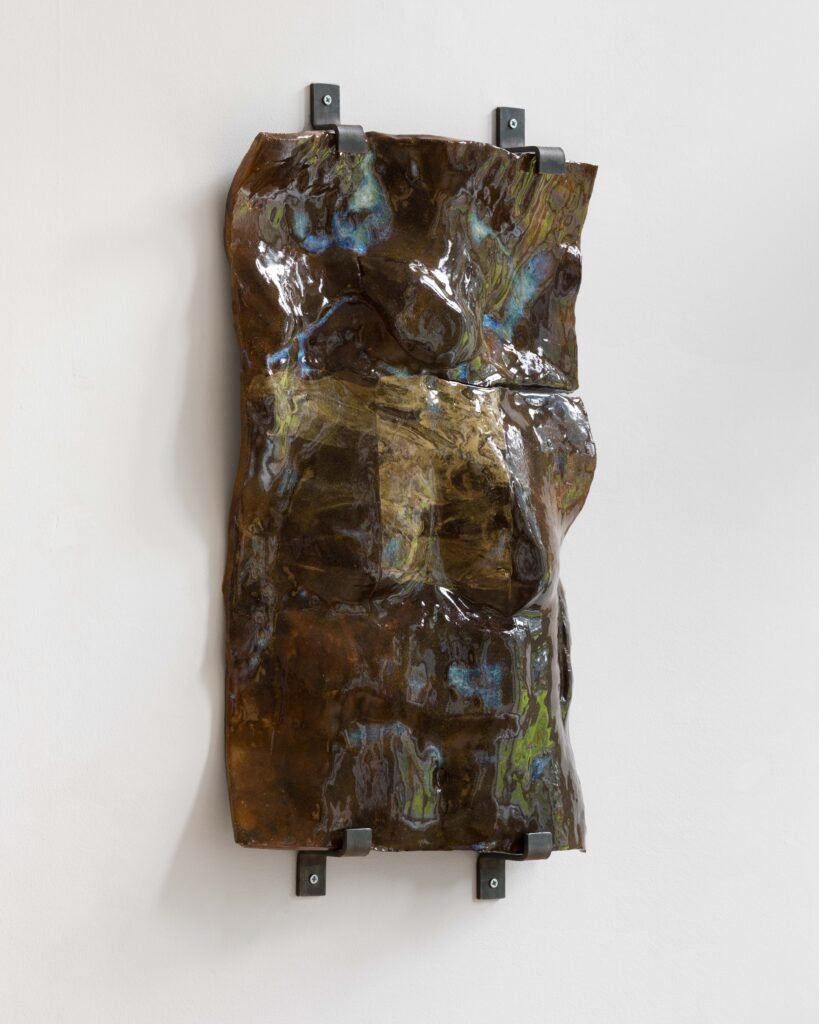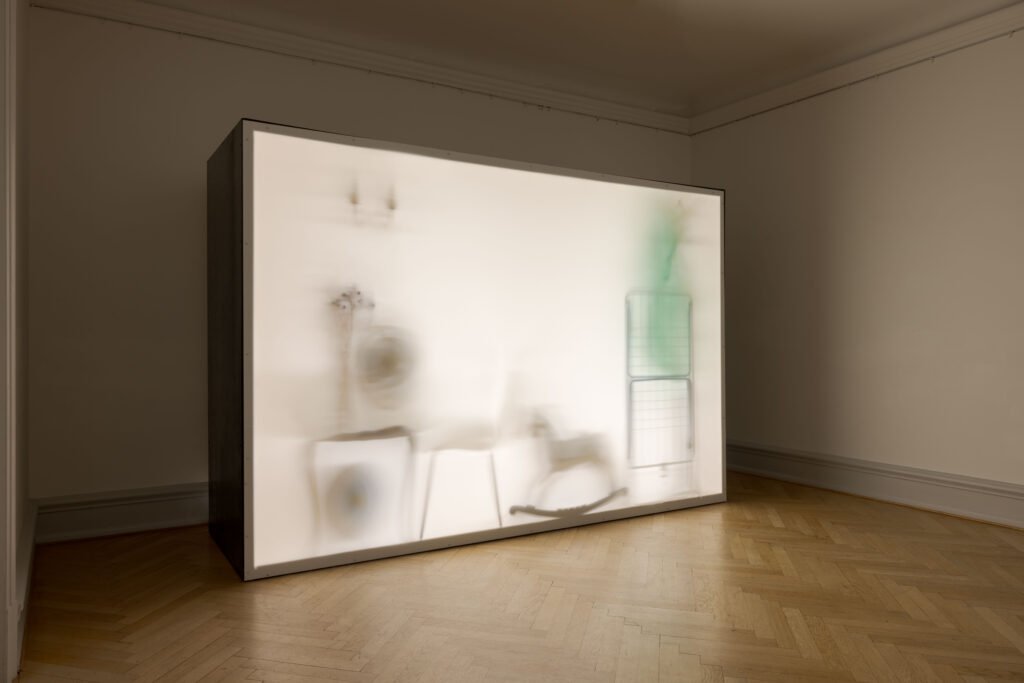Vivavoce






















Davide Hjort Di Fabio, “Vivavoce” at Istituto Italiano di Cultura, Copenhagen
Date: 15 August – 16 september 2024
From autumn 1943 to spring 1944, violent battles were fought in central Italy between the Nazis, who had occupied the northern part of the country, and the Allies, who were advancing from the south. A little north of the Nazi defense lines is the small mountain town of Popoli. The town was hit by sixteen air raids by the Allies between 24 October 1943 and 23 May 1944.
During the period of bombardments, many of Popoli’s inhabitants used caves in the mountains around the town as refuge, among others Paola Di Giandomenico, Di Fabio’s grandmother. She was three years old when the first air raid hit. In the video Occhi socchiusi (squinting eyes), she shows Di Fabio the cave she took refuge in with her family. They had arranged the cave as a home with a dinning table, chairs, kitchen drawers and mattresses.
It is Di Giandomenico’s oral recounts that form the starting point of the exhibition and in the works Di Fabio has preserved the volatility that characterizes the spoken word. The grandmother’s own photographs of her brother on a bicycle, her dog Lampo and her house have been scanned and printed on the back of photo paper so that the toner and motifs become blurred, and in 9:15 pm we see only shadows of objects.
In modern Italian, vivavoce refers to the speaker function on phones, but in the exhibition it is especially the etymological meaning “from mouth to mouth”; which is highlighted. And just like the title of the exhibition Vivavoce invites both a direct and an indirect interpretation, the works offer a situated, material experience at the same time as they open up an imaginary space related to the experience. The relief Muro (wall), for example, is a ceramic cast of Di Fabio’s torso, which brings to mind a rock wall and thus turns the body into a memory archive.
The shadow cabinet gives a feeling of looking into a home through the windows, perhaps on a winter evening, but also a feeling of being distanced from the objects because it is difficult for the eyes to focus on the shadows and because we can hardly see what all shadows are shadows of. The indistinct and hazy shadows are like memories that are never quite as clear and distinct as the experiences themselves, changing over time and taking other forms in our consciousness. In the same way that meanings of words change. With Vivavoce, memory becomes both a bodily and a social matter. Memories are retold and anchored materially, and material sediments give rise to commemoration.
Popoli is full of traces that evokes the shared memories of the inhabitants. Many houses are still roofless or uninhabitable due to the risk of collapse after the bombings during the war and an earthquake in 2009. The Pescara River rumbles through an empty brick-walled building where they used to wash clothes. In one of the town squares, there is a bust of the doctor who sent Di Giandomenico to a sanatorium with tuberculosis when she was fourteen. He did not think she would survive, but she recovered, and when she returned from the sanatorium, she got a camera as a gift and used it to take the photos that Di Fabio has reworked for the exhibition.
–Mads Nielsen
Davide Hjort Di Fabio, born 1990 in Popoli, Abruzzo, Italy, lives and works in Copenhagen, Denmark. He received an MFA from the Royal Danish Academy of Fine Arts in 2024. Recent exhibitions include Kunsthal Charlottenborg (2024), The Italian Cultural Institute (2024), Vejen Kunstmuseum (2023), Outpost (2022), Kunsthal Rønnebæksholm (2021), Galleri Bo Bjerggaard (2021), Den Frie Udstillingsbygning (2020).


